Monday, August 30th, 2021
Raising Butterflies
Three area women are doing their part to increase numbers
By Sydney Albert
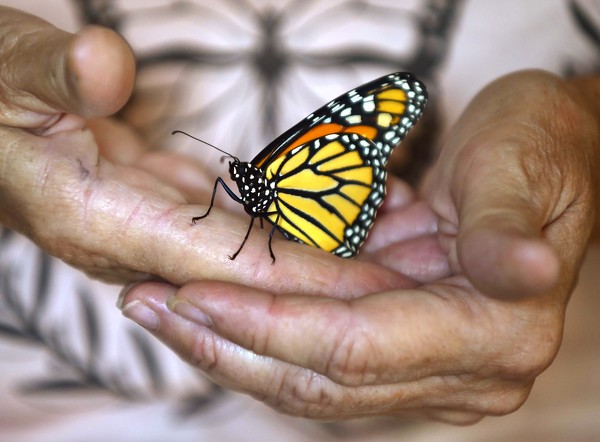
Photo by Dan Melograna/The Daily Standard
Julie Metz holds a new butterfly at her home in St. Marys.
The striking orange and black monarch butterfly is arguably one of the most famous species of insect in the United States, though it faces a number of threats.
Several local residents have taken it upon themselves to give them a helping hand.
Norma Wolters of Coldwater grows milkweed in her yard. Though not well-loved by humans, milkweed is the only place female monarch butterflies will lay their eggs, and the plant is the only source of food for monarch caterpillars. A female can lay up to 300 eggs, laying one egg each on the underside of milkweed leaves, Wolters said.
Despite the high number of eggs, Wolters said only about 1% will survive to become butterflies. To help the butterflies along, Wolters and other monarch-loving residents have taken to harvesting the butterfly's eggs and raising them to adulthood in protected boxes and cages, hoping to save some from predators such as ants and spiders.
While Wolters started helping monarch more than 20 years ago, others have begun more recently. Julie Metz of St. Marys started collecting eggs last year. She'd released 65 butterflies last year, and if all the eggs and caterpillars she's collected so far this year make it, she estimates she could release more than 90.
People don't need specialized equipment to help. Putting a stick in a ventilated jar with a caterpillar can be good enough, so long as the caterpillar has plenty of fresh milkweed leaves to eat and any droppings are cleaned out regularly, Wolters said.
Unfortunately, both Metz and Wolters have noticed fewer monarch butterflies visiting their gardens this year. Metz theorizes they may have gotten off to a late start, or run into unseasonably cold weather somewhere along their migration route. The butterflies migrate from Mexico up to Canada and back again. Monarchs have a lot going against them, Metz said, from pesticide use and mowing that destroys milkweed, to climate change and deforestation of their wintering grounds in Mexico.
According to a news release from the Center for Biological Diversity, the Eastern monarch butterfly's population was down by 26% in February.
The Eastern monarch population is made up of the butterflies east of the Rocky Mountains and accounts for roughly 99% of all North American monarchs, the release states. They migrate each winter to oyamel fir forests on high-elevation mountaintops in central Mexico. Scientists estimate the population size by measuring the area of trees turned orange by the clustering butterflies.
In February, scientists counted 2.10 hectares, or 5.2 acres, of occupied winter habitat. The minimum population threshold needed to be out of the danger zone of extinction is six hectares, scientists say.
The butterflies have an important role as pollinators, but many of the people who love them find value in their existence alone. Their beauty, and the story of their continent- and generation-spanning migration, fascinates many.
Jackie Backs and her husband Joe of rural Celina, have a little more than two acres in the countryside where they planted various flowers and pollinator-friendly plants, including milkweed. The couple even has a certification for their land as monarch habitat from the volunteer-based citizen science organization Monarch Watch.
The Backses don't bring in monarch eggs or caterpillars as some others do, but they provide the milkweed and other plants the butterflies need to continue their lifecycle. Jackie Backs said she too had noticed a decrease in the number of monarch butterflies she's seen this year. It's sad, but the drop is what comes from pesticide and herbicide use, she said.
Anyone can do their part to help ensure these wonderful creatures are still here for future generations to enjoy, Jackie Backs said; a few milkweed plants can make a difference.
In the meantime, she and her husband will continue to help Mother Nature. So long as they're around, she said they'd try to help the butterflies have food and a place to lay their eggs.
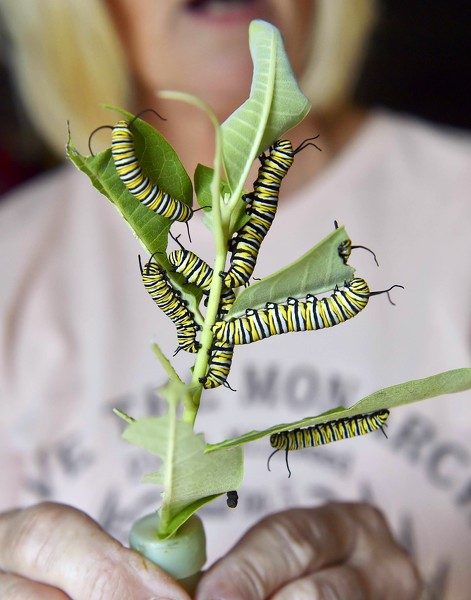
Photo by Dan Melograna/The Daily Standard
Julie Metz holds a milkweed plant as monarch caterpillars munch on the leaves.

Photo by Dan Melograna/The Daily Standard
A monarch chrysalis hangs from a milkweed leaf inside its enclosure at Metz's home.
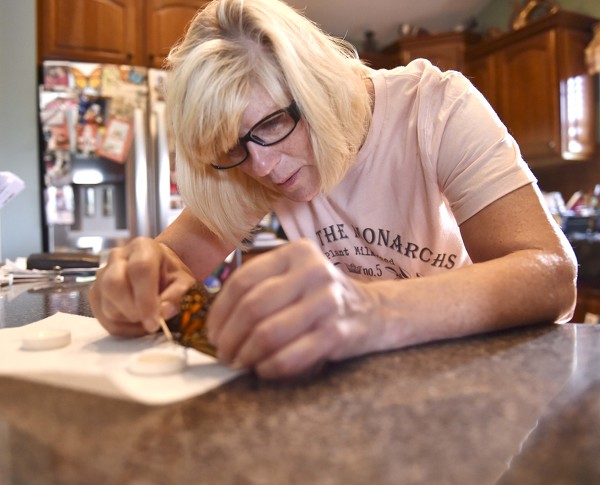
Photo by Dan Melograna/The Daily Standard
Julie Metz of St. Marys feeds a monarch butterfly.
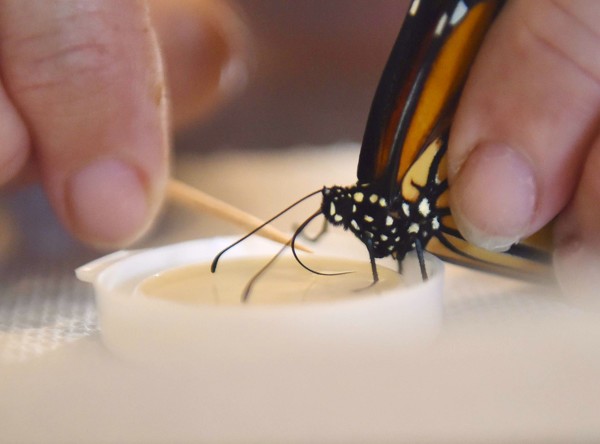
Photo by Dan Melograna/The Daily Standard
Julie Metz of St. Marys feeds a monarch butterfly.
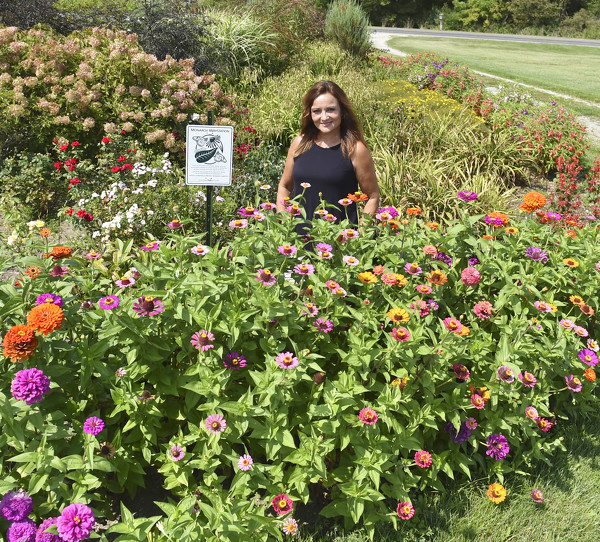
Photo by Dan Melograna/The Daily Standard
Jackie Backs stands among a monarch habitat area at her rural Celina home where she and her husband, Joe, planted numerous flowers and milkweed plants. The 2-acre site is certified by the volunteer-based citizen science organization Monarch Watch.

